This is the third post in a series about the Leica Q2 Monochrom. You can see all the other posts in the series by looking in the Category List drop-down menu on the right side of the page.
Some people who read yesterday’s post asked about differences between the GFX 50S and the Leica Q2 Monochrom in highly chromatic light that only excites one CFA color plane in a Bayer-CFA camera. I used to do those tests using a #29 and #47 filter over the lens. I went looking, and found the two 77mm filters. But I couldn’t find my step-up ring collection. I seem to remember that, a year or so ago, I gathered all my step-up rings together and put them in A Safe Place. You know how that goes. I can’t find them.
So I printed a red sinusoidal Siemens star target.
To get equivalent diffraction, I shot the Q2 at f/4, and the GFX at f/5.6.
The details:
- Low-contrast sinusoidal Siemens star chart
- RRS carbon fiber legs, Arca C1 head
- Manual focusing with max enlargement and peaking
- 4 shots at each condition, keep only the sharpest one.
- 2-second self timer delay
- Sharpening turned off in Lr
- Contrast increased in Lr by the same amount for the two sets of captures
The color version of the star with the GFX, at a bit over 100%:
The B&W version of the GFX image:
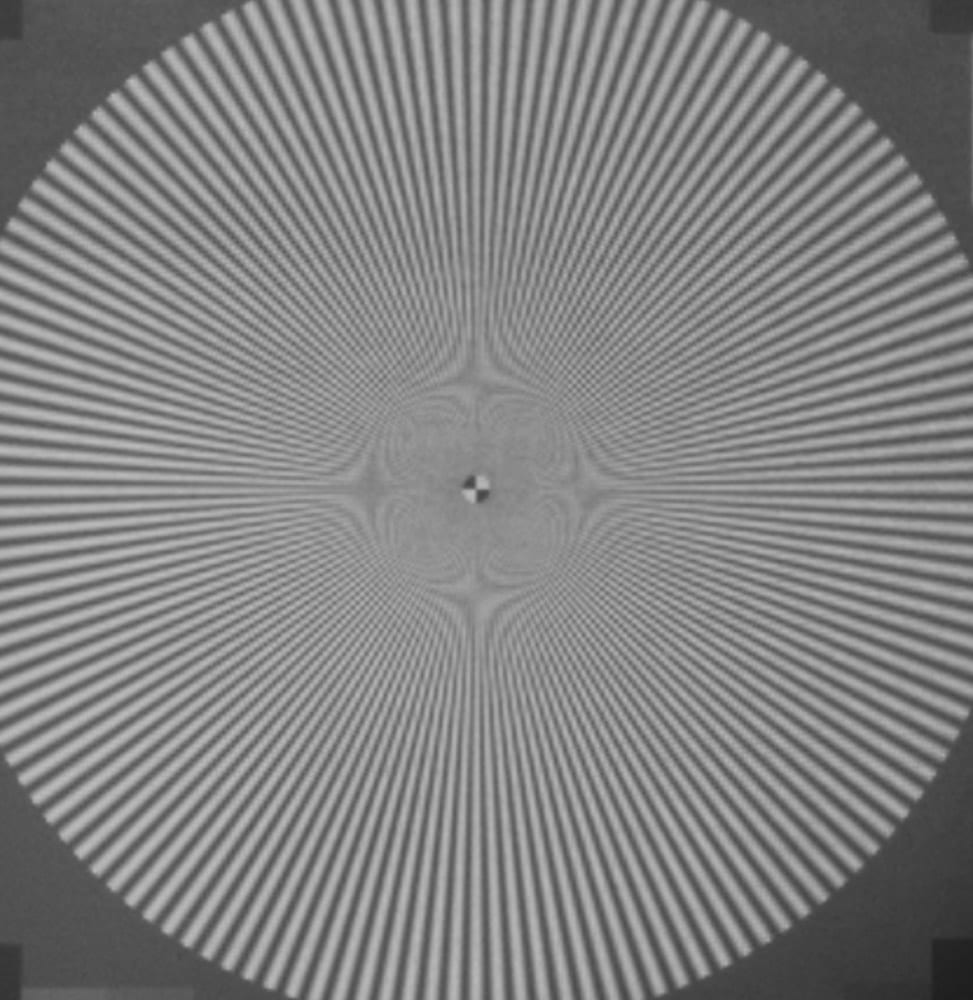
The Q2 Monochrom image:
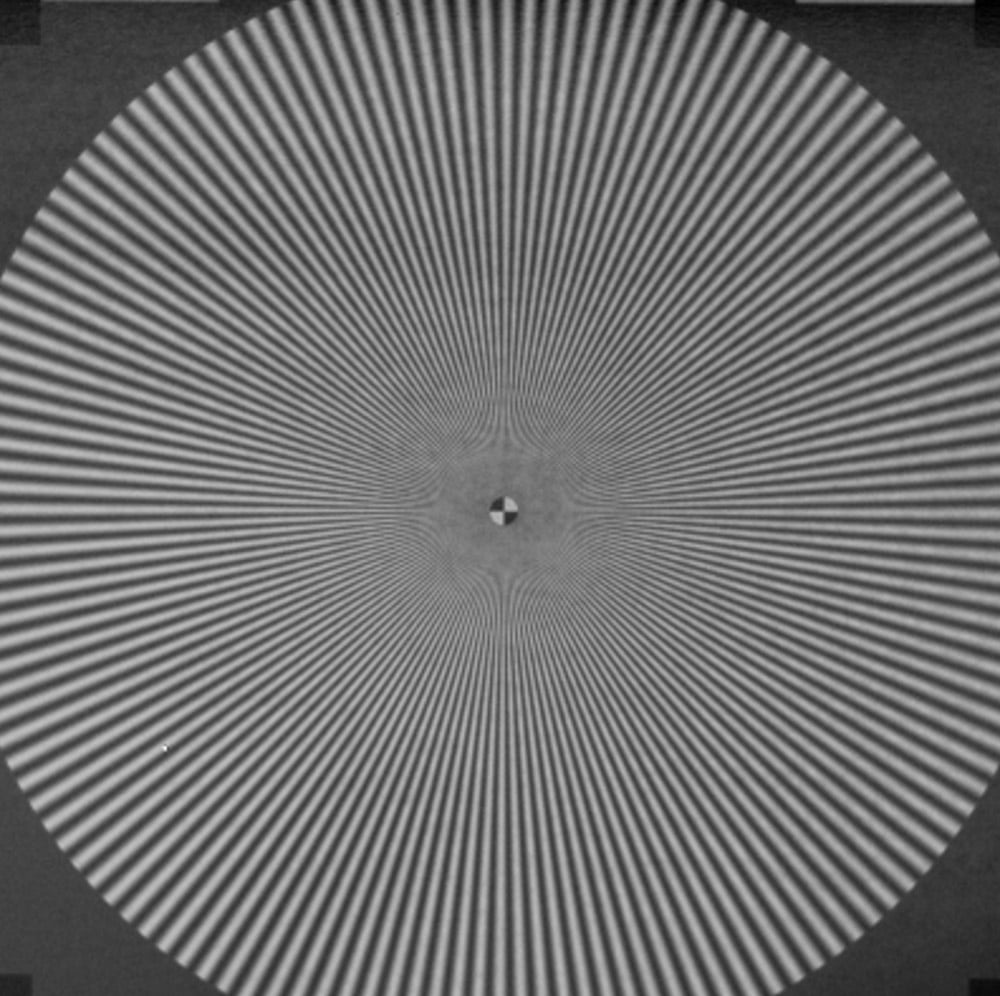
The Q2 has far less aliasing. In addition, the spatial frequency of the aliased components is in general of higher spatial frequency, which makes them less objectionable.
Lr’s Enhanced demosaicing of the GFX image doesn’t help much:
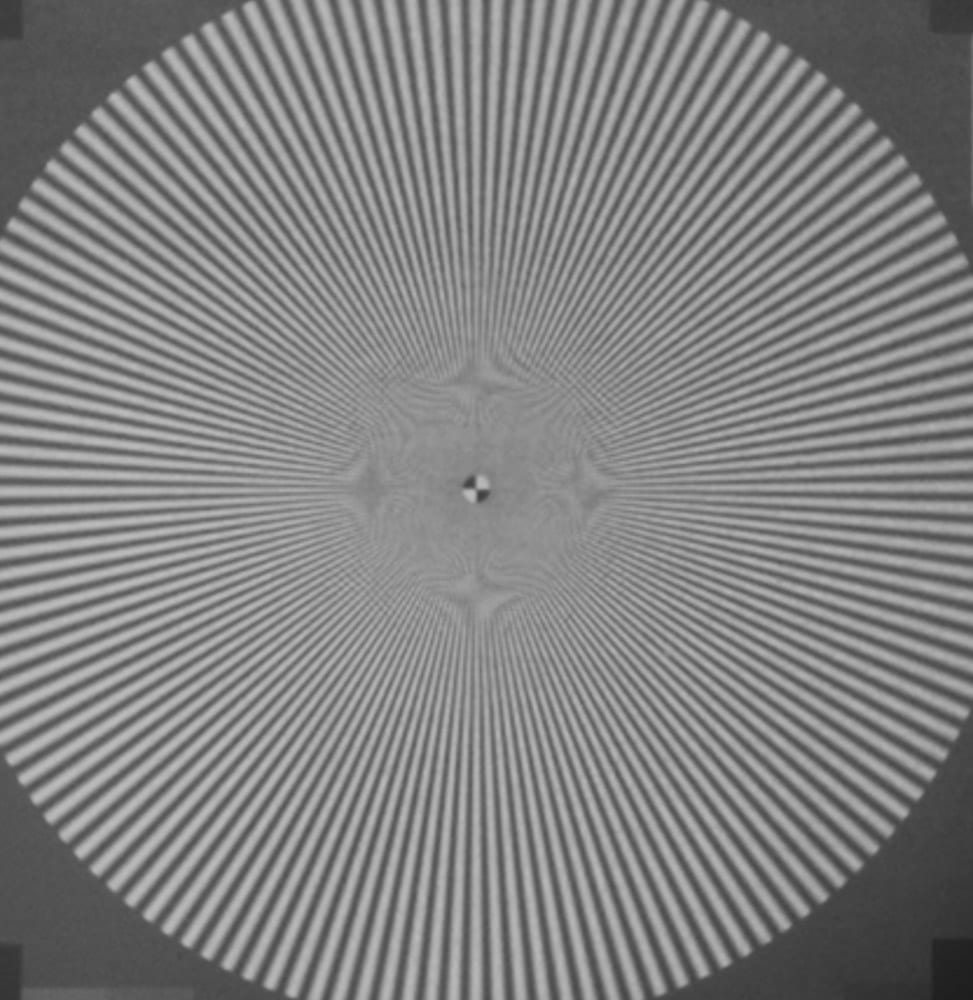
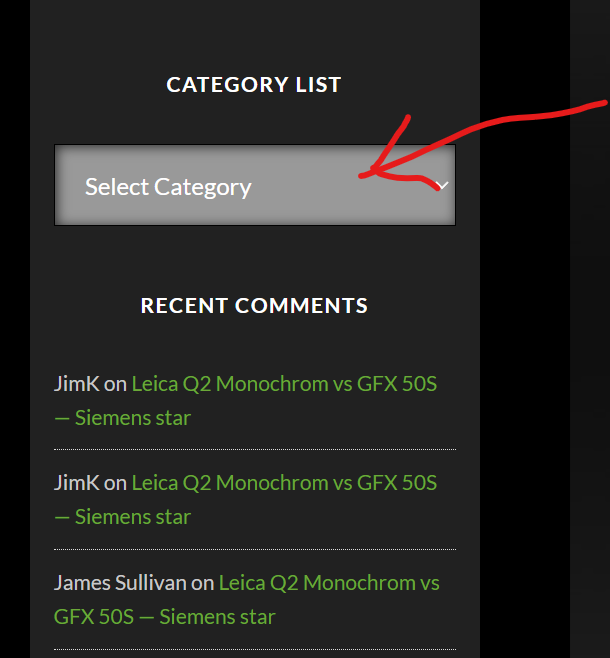
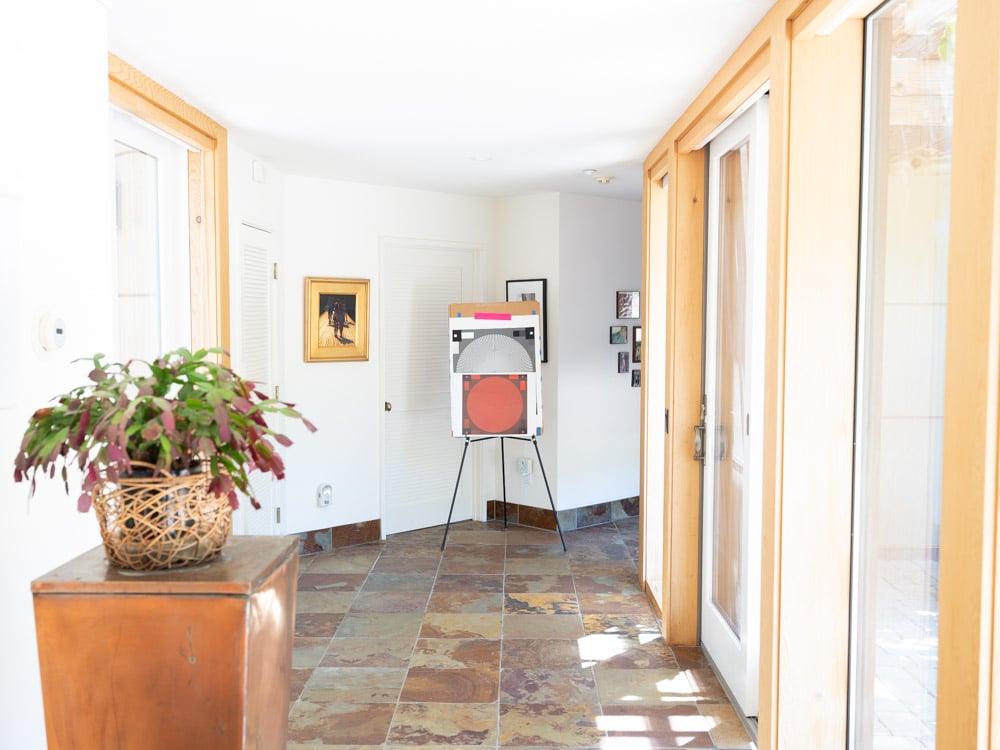
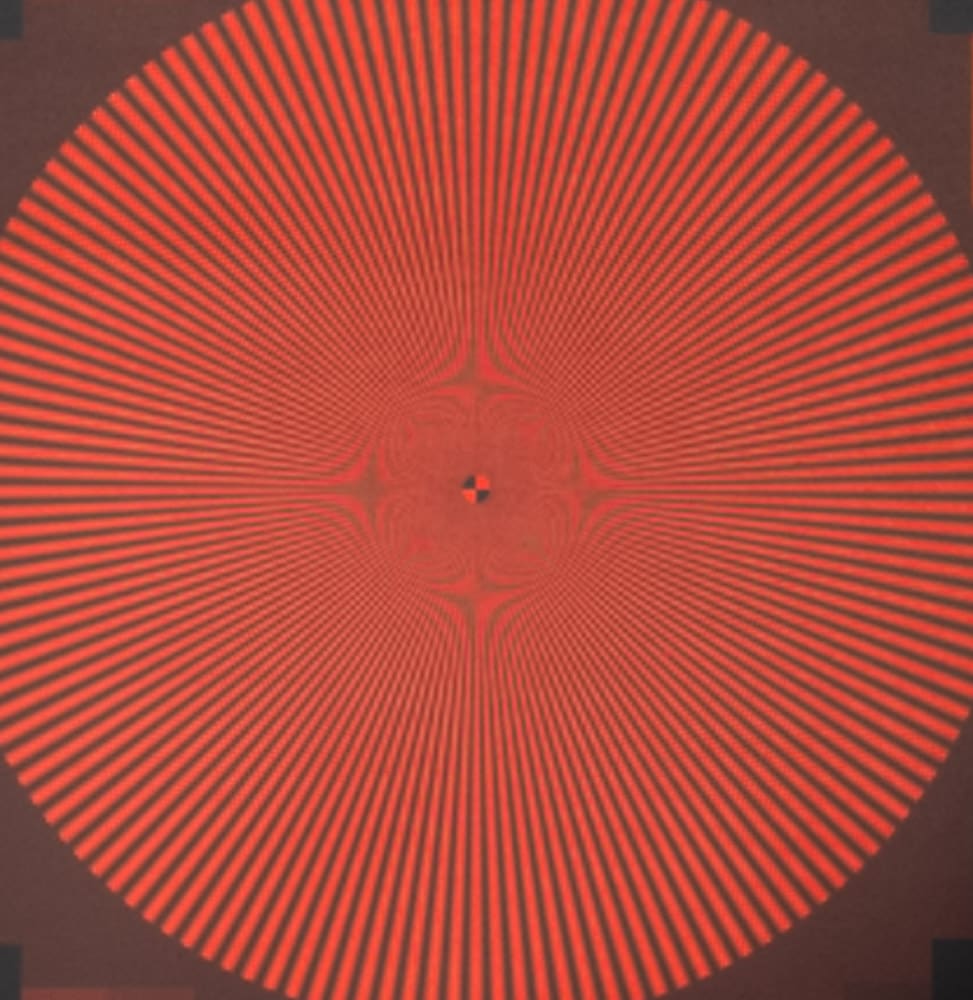
Leave a Reply